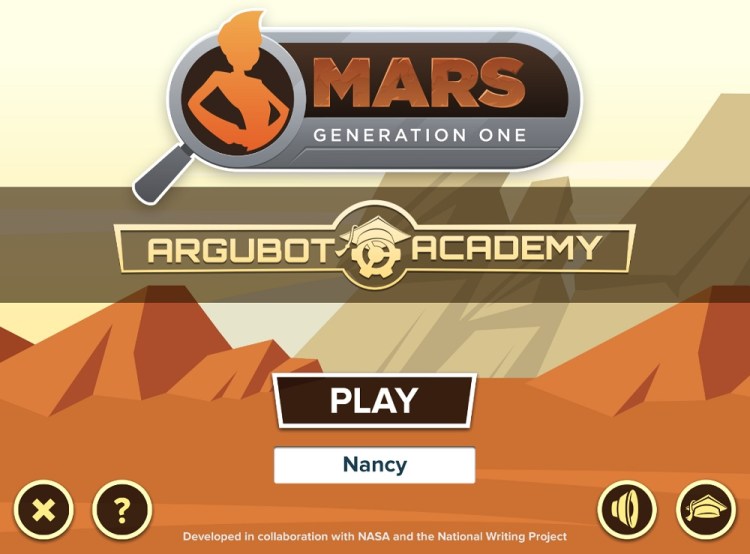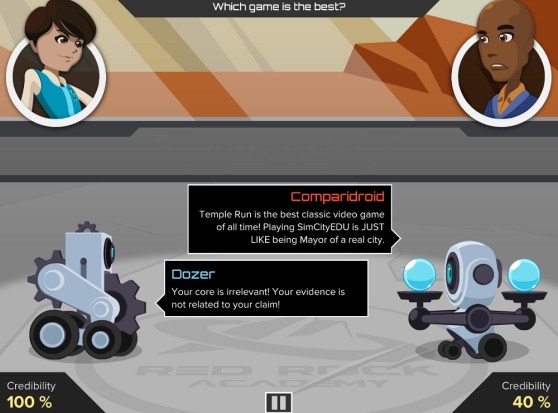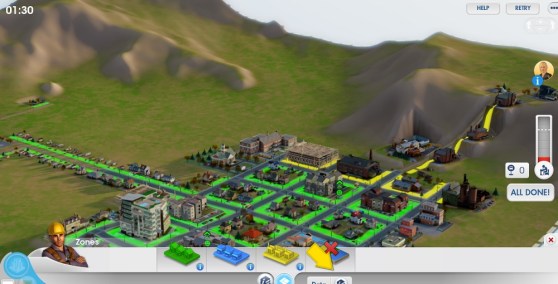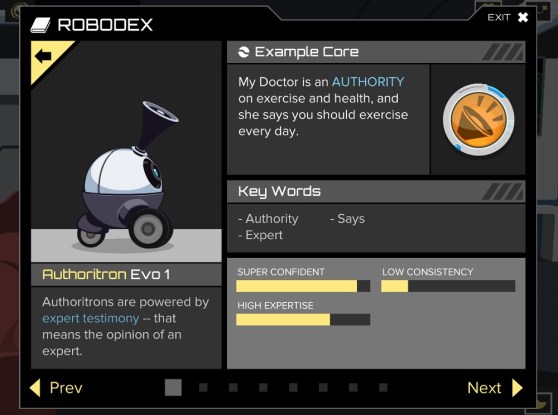Lindl: I would say not just the adaptivity, because that’s been around for a while now, just how adaptive games can be. It’s making the learning experience that’s happening in the game much more visible to the players themselves, as well as to teachers and parents. They feel like they’re part of the experience. It’s not this notion like, “My kid spent the last five hours straight in Minecraft. What’s going on?” Rather, “God, they spent the last five hours improving their problem-solving skills.” That’s exciting.
GamesBeat: How has the interest among kids spread across to different platforms? Are they more interested in tablets or PCs?
Lindl: It varies according to what setting they’re in. If they’re at home and hanging out, it’s usually the tablet. In a school setting it’s still tough to get that one-to-one tablet adoption. In fact, we’re seeing a significant increase in Chromebooks. I’d say that in school it’s primarily web-based, and then tablets following closely behind.
GamesBeat: How do you take some lessons from the industry as well? Some of these apps on mobile are becoming popular and sticky, very engaging. They do some things that you probably don’t want to do for commercial purposes, but are you learning from things like Clash of Clans or any other really popular games that are out there?
Lindl: In fact, most of our team comes from the commercial game side. This is their first entry into learning games or educational games. That was a deliberate hiring focus for us. We wanted these products, first and foremost, to be live games that were continuously improving and developing with the market.
You’re right that we’re not going to do in-app purchases or things like that. That’s against what our core market is interested in. But as far as continually optimizing the game for engagement and learning purposes, that’s what we’re doing. We update SimCity on a regular basis, even though it’s been on the market for more than a year. We’re continuously updating both games that we have on the market now, and we’ll continue to have teams dedicated to that. Similar to our industry partners, the game team expands after the game is launched.
GamesBeat: What’s a typical update for you?
Lindl: The primary updates are improving the learning model and the assessment model. These games have assessments that teachers trust and depend on. WE’re ensuring that they’re as valid and reliable as possible – that the more players you’re seeing, the more data you’re getting to be able to make decisions on the assessment model.
We’re continuing to optimize for engagement purposes, seeing where kids are falling off. To us, that means they’re falling off from a learning perspective, not just from an engagement perspective. We’re continuing to optimize the game design from that viewpoint as well.
The other key thing we’ve taken away from the industry is that you’re not playing the game and then getting some sort of a test or a quiz afterward. The game loop and the core mechanic of the game is the learning core loop. There’s no separation. When you play Mars Generation One, you’ll see that the core game loop is a game loop that teaches you argumentation, how to develop your argument and gather evidence for it. There’s no separation between what you experience from a game perspective and what you learn. That was a critical reason why we hired the team we did.
GamesBeat: What’s your understanding of how large the educational games market is now? How is it changing?
Lindl: If you want to think about the core learning game market, defining it just as learning games, that’s about $1.5 billion right now. If you want to think about replacements, that’s almost a $5 trillion education market. That’s how we look at the market size. Games do a phenomenal job of teaching and assessing things that we’ve relied too heavily on textbooks to do. How can we replace some of these more outdated modes of education with things that are much more relevant for kids?
You know this better than I do, but we’ve got middle school kids who are playing, on average, about 18 hours of video games a week. They’re spending about five hours a week doing their homework. There’s clearly opportunities for us to make that learning experience more engaging than it has been for the last 100 years.
GamesBeat: Are there some other interesting platforms that you’re thinking about or considering as far as trying to go where the kids are going to be?
Lindl: We definitely keep an eye on where the more innovative platforms are. The challenge is that we want to be widely adopted in schools. We had a few members of the FCC out visiting us last week, talking about the fact that we still can’t even get ubiquitous broadband in schools. That’s really limiting the kind of innovation we can invest in.
We have a fine balance between what the market can adopt for schools that are serving all types of kids in diverse socioeconomic backgrounds, versus what’s going to be the most innovative for our games. That’s a challenge we’re continuing to try to manage and balance.
GamesBeat: I was wondering about virtual reality and the Oculus Rift and things like that.
Lindl: Exactly. We have some team members tinkering with that. At this point in time, we have to get that technology to a point where it’s accessible by a diverse set of kids. That’s not where it is right now.
GamesBeat: Do you have any particular advice for people who are thinking about this sort of education segment — people in startups or new game studios?
Lindl: My first piece of advice is, give us a call. We’d love to partner with you and support you in getting to market. That’s what we’ll be announcing in a couple of weeks, the efforts around that.
The second is that, from a design perspective, it’s about ensuring that we create things that have a commercial quality level, what kids are already used to, and that provide data and assessment in a way that’s meaningful for parents and teachers, in order to get that level of adoption. Those are two key things. Make sure that your team has commercial-quality talent and that you have expertise in understanding how the data from your gameplay can align with critical learning standards that teachers and parents care about.
GamesBeat: What other things in tech generally do you feel are working, things that are also educational, but perhaps outside of the game market?
Lindl: There’s been a big explosion in seed rounds and series A for a lot of the ed-tech companies out there. We’re seeing early hints of what can happen with the benefit of things like social media being brought into the education space. The other part that’s exciting for us to keep an eye on is just how unlocking the benefits of technology adoption in these schools can bring more innovation into schools.
I would say that we’re transitioning from technology being an efficiency tool to now looking at technology really deepening the learning experience. Because of technologies like mobile becoming more accessible and HTML 5 becoming more widespread within the market, we’re getting to a point where we can start leveraging those technologies for deeper learning – not just ed-tech tools that increase efficiency and productivity.
VentureBeat's mission is to be a digital town square for technical decision-makers to gain knowledge about transformative enterprise technology and transact. Learn More




